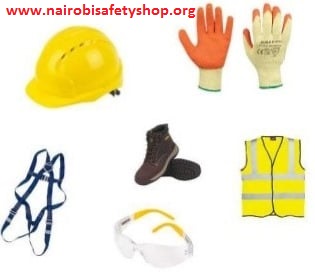Chemical safety is a crucial aspect of workplace safety that significantly impacts employee health and environmental protection. I am Ambassador Steve Mbugua, the globally recognized Ambassador of Safety, dedicated to advancing chemical safety standards across various industries. In this article, we explore essential strategies for effective chemical safety management, including hazard identification, risk assessment, and the implementation of best practices for handling, storage, and disposal of hazardous substances. By prioritizing chemical safety, organizations can prevent accidents, protect their workforce, and ensure compliance with safety regulations. Let’s delve into the vital components of chemical safety and build a culture that prioritizes the well-being of all employees.
Introduction to Chemical Safety
Chemical safety involves the management and control of chemicals to prevent accidents, injuries, and illnesses resulting from exposure to hazardous substances. This encompasses proper storage, handling, use, and disposal of chemicals, as well as implementing safety measures and protocols to protect individuals and the environment.
Causes of Chemical Accidents
Chemical accidents can result from various sources, including:
1. Spills and Leaks: Accidental release of chemicals due to container failure, human error, or equipment malfunction.
2. Improper Storage: Inadequate or incorrect storage conditions leading to chemical reactions or degradation.
3. Mixing Incompatible Chemicals: Unintentional or careless mixing of chemicals that react violently.
4. Human Error: Mistakes in handling, labeling, or using chemicals.
5. Equipment Failure: Malfunctioning or improperly maintained equipment leading to chemical release.
6. Lack of Training: Inadequate training on safe handling and emergency procedures.
7. Transportation Incidents: Accidents during the transport of chemicals.
8. Unauthorized Access: Access by untrained or unauthorized personnel.
9. Improper Disposal: Inadequate or incorrect disposal methods.
10. Environmental Factors: Natural disasters causing chemical spills or leaks.
Types of Chemical Hazards
Chemical hazards can be classified into various categories based on their physical and health effects:
1. Flammable Chemicals: Substances that can easily ignite and cause fires.
2. Corrosive Chemicals: Substances that can cause severe damage to tissues or materials.
3. Toxic Chemicals: Substances that can cause harm or death when inhaled, ingested, or absorbed.
4. Reactive Chemicals: Substances that can react violently with other chemicals or conditions.
5. Carcinogens: Substances that can cause cancer.
6. Mutagens: Substances that can cause genetic mutations.
7. Teratogens: Substances that can cause birth defects.
8. Irritants: Substances that can cause inflammation or discomfort.
9. Sensitizers: Substances that can cause allergic reactions.
10. Oxidizers: Substances that can cause or enhance combustion.
11. Cryogenic Liquids: Extremely cold liquids that can cause frostbite and other injuries.
12. Radioactive Materials: Substances that emit radiation.
Latest Trends in Chemical Safety
1. Advanced Chemical Sensors: Use of real-time sensors for detecting chemical leaks and spills.
2. Automated Chemical Handling Systems: Robotics and automation to minimize human exposure.
3. Enhanced Personal Protective Equipment (PPE): Development of more effective and comfortable PPE.
4. Chemical Safety Software: Advanced software for managing chemical inventories and safety data sheets (SDS).
5. Sustainable Chemical Management: Focus on green chemistry and reducing hazardous waste.
6. Virtual Reality (VR) Training: VR-based training programs for safe chemical handling and emergency response.
7. Integrated Safety Management Systems: Combining chemical safety with overall workplace safety management.
8. Predictive Analytics: Using data analytics to predict and prevent chemical incidents.
9. Remote Monitoring: Use of IoT for remote monitoring of chemical storage and usage.
10. Eco-friendly Chemicals: Development and use of less hazardous alternatives.
11. Safety Culture Promotion: Emphasizing the importance of a safety-first culture in chemical handling.
12. Enhanced Regulatory Compliance Tools: Software and tools to ensure compliance with chemical safety regulations.
13. Emergency Response Improvements: Advances in emergency response protocols and equipment.
14. Employee Wellness Programs: Integrating chemical safety with overall employee health and wellness.
15. Global Harmonization: Adopting globally recognized standards for chemical classification and labeling.
Chemical Safety Audits and Inspections
Chemical safety audits and inspections are crucial for ensuring compliance with safety regulations and identifying potential hazards in the handling and storage of chemicals.
Key Elements of Chemical Safety Audits:
1. Risk Assessment: Identifying and evaluating chemical hazards.
2. Compliance Check: Ensuring adherence to chemical safety regulations and standards.
3. Storage Conditions: Verifying proper storage conditions for chemicals.
4. Labeling and Documentation: Checking the accuracy of labeling and availability of Safety Data Sheets (SDS).
5. Equipment Inspection: Ensuring proper maintenance and functioning of chemical handling equipment.
6. Training Evaluation: Assessing the adequacy of chemical safety training programs.
7. Waste Management: Reviewing procedures for chemical waste disposal.
8. Emergency Preparedness: Evaluating emergency response plans and drills.
Chemical Safety Training
Effective chemical safety training is essential for educating employees on safe handling practices, emergency response, and proper use of personal protective equipment (PPE).
Types of Chemical Safety Training:
1. Hazard Communication Training: Educating employees on the hazards of chemicals they may encounter.
2. PPE Training: Instruction on the selection, use, and maintenance of personal protective equipment.
3. Emergency Response Training: Training on procedures for dealing with chemical spills, leaks, and exposures.
4. Safe Handling and Storage Training: Techniques for safely handling and storing chemicals.
5. Waste Management Training: Proper disposal methods for chemical waste.
6. First Aid Training: Basic first aid for chemical exposures and injuries.
7. Chemical Spill Response Training: Procedures for containing and cleaning up chemical spills.
8. Lab Safety Training: Specific training for laboratory environments.
9. Transport Safety Training: Safe practices for transporting chemicals.
10. Customized Training Programs: Tailored training for specific chemicals or processes.
Chemical Safety Installations
Proper installations are crucial for maintaining a safe environment when dealing with hazardous chemicals.
Key Chemical Safety Installations:
1. Chemical Storage Cabinets: Fire-resistant and ventilated cabinets for storing hazardous chemicals.
2. Emergency Showers and Eyewash Stations: Accessible stations for decontamination in case of exposure.
3. Fume Hoods: Ventilated enclosures for safely handling volatile chemicals.
4. Spill Containment Kits: Kits for quickly containing and cleaning up chemical spills.
5. Ventilation Systems: Adequate ventilation to prevent accumulation of hazardous fumes.
6. Gas Detection Systems: Sensors for detecting leaks of hazardous gases.
7. Fire Suppression Systems: Automatic systems for extinguishing fires involving chemicals.
8. Chemical Waste Disposal Units: Proper units for the safe disposal of chemical waste.
9. Personal Protective Equipment (PPE) Stations: Areas stocked with necessary PPE.
10. Safety Signage: Clear signage indicating hazards and safety protocols.
11. First Aid Stations: Stations equipped with supplies for treating chemical injuries.
12. Chemical Handling Equipment: Tools and equipment designed for safe chemical handling.
Laws or Regulations That Apply to Chemical Safety
1. Occupational Safety and Health Administration (OSHA) Hazard Communication Standard: Requires labeling and safety data sheets (SDS) for hazardous chemicals.
2. Environmental Protection Agency (EPA) Regulations: Governs the management of hazardous waste and chemicals.
3. Globally Harmonized System of Classification and Labelling of Chemicals (GHS): Standardizes classification and labeling of chemicals worldwide.
4. Resource Conservation and Recovery Act (RCRA): Regulates the disposal of hazardous waste.
5. Clean Air Act (CAA): Controls the release of hazardous air pollutants.
6. Toxic Substances Control Act (TSCA): Regulates the production and use of chemicals.
7. Chemical Facility Anti-Terrorism Standards (CFATS): Security requirements for high-risk chemical facilities.
8. Emergency Planning and Community Right-to-Know Act (EPCRA): Requires facilities to report on the storage and release of hazardous chemicals.
9. Federal Insecticide, Fungicide, and Rodenticide Act (FIFRA): Regulates the use and distribution of pesticides.
10. OSHA Process Safety Management (PSM) Standard: Focuses on preventing releases of hazardous chemicals.
11. Clean Water Act (CWA): Regulates the discharge of pollutants into waterways.
12. Hazardous Materials Transportation Act (HMTA): Regulates the transportation of hazardous materials.
Conclusion
Chemical safety is a vital aspect of workplace safety, requiring comprehensive understanding and management of chemical hazards. By identifying and mitigating risks, adhering to the latest trends, conducting regular audits and inspections, providing effective training, and ensuring proper installations, organizations can create a safe environment for handling chemicals. Compliance with relevant laws and regulations further strengthens chemical safety protocols, fostering a culture of safety and preparedness.
In conclusion, chemical safety is a critical component of workplace safety that requires vigilant attention and robust safety measures. As the Ambassador of Safety, I have highlighted the importance of conducting thorough risk assessments, providing comprehensive training, and establishing clear protocols for handling and disposing of hazardous substances. By implementing these strategies, organizations can minimize chemical-related risks, ensure compliance with safety standards, and create a safe environment for their employees. Let us commit to championing chemical safety and working collaboratively to foster workplaces that prioritize health, safety, and environmental protection. Embracing these practices safeguards lives and contributes to the long-term success and sustainability of organizations.
READ MORE
Chemical Safety Video
Largest Safety Company
Conducting Chemical Safety Workshop
Building A Culture Of Safety



















